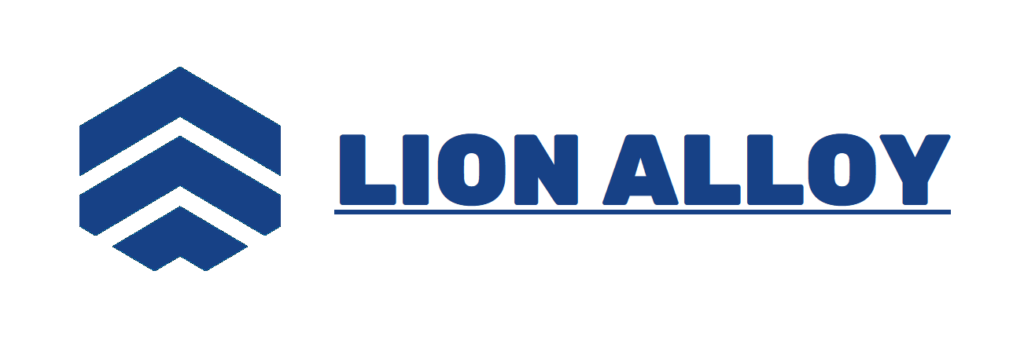Introduction
NIMONIC 80A, a renowned nickel-based superalloy, has emerged as a critical material in the energy sector, particularly for applications in modern power generation systems. Its exceptional mechanical properties, high-temperature stability, and resistance to oxidation make it well-suited for components that operate under the harsh conditions found in gas turbines, steam turbines, and other energy-producing technologies. This article explores how NIMONIC 80A meets the challenges faced in contemporary power generation and why it is increasingly favored by manufacturers and engineers.
1. The Importance of High-Performance Alloys in Energy Production
1.1 Demanding Operational Conditions
Les systèmes de production d'électricité, y compris les turbines à gaz et à vapeur, fonctionnent sous des températures et des pressions extrêmes. Les matériaux utilisés doivent résister à une contrainte mécanique importante, à une expansion thermique et à l'oxydation, tout en maintenant l'intégrité et les performances structurelles.
1.2 Le rôle des alliages dans l'efficacité
L'efficacité des systèmes de production d'énergie est cruciale, car elle affecte directement la production d'énergie et les coûts opérationnels. Les alliages haute performance, tels que Nimonic 80A, peuvent améliorer l'efficacité du système en permettant des températures et des pressions de fonctionnement plus élevées, ce qui augmente à son tour l'efficacité de conversion d'énergie.
2. Propriétés du Nimonic 80A pertinente pour les applications énergétiques
Nimonic 80A possède plusieurs propriétés clés qui le rendent particulièrement bien adapté aux applications du secteur de l'énergie.
2.1 High-Temperature Resistance
NIMONIC 80A maintains its mechanical properties at elevated temperatures, with a yield strength of 600 MPa and an ability to withstand temperatures up to 900 °C.
Table 1: High-Temperature Strength Retention of NIMONIC 80A
| Température (° C) | Limite d'élasticité (MPa) | Résistance à la traction ultime (MPa) |
|---|---|---|
| 600 | 550 | 800 |
| 700 | 500 | 750 |
| 800 | 450 | 700 |
| 900 | 400 | 650 |
2.2 Resistance to Oxidation and Corrosion
The high chromium content in NIMONIC 80A provides exceptional resistance to oxidation and corrosion, which is essential in energy applications where components are often exposed to harsh environments.
2.3 Creep Resistance
Creep, the tendency of materials to deform under mechanical stress over time, is a significant concern in high-temperature applications. NIMONIC 80A exhibits excellent creep resistance, allowing components to maintain their shape and performance over extended periods.
Table 2: Creep Resistance of NIMONIC 80A
| Alliage | Creep Rate (mm/1000 hours) | Niveau de performance |
|---|---|---|
| Nimonique 80a | 0.001 | Excellent |
| Inconel 718 | 0.002 | Bien |
| Waspaloy | 0.005 | Équitable |
3. Applications of NIMONIC 80A in Power Generation
NIMONIC 80A is utilized in various critical components of power generation systems, where its unique properties can be fully leveraged.
3.1 Gas Turbines
In gas turbines, NIMONIC 80A is often used for turbine blades, spacers, and combustion chambers due to its ability to perform under high temperatures and mechanically demanding conditions.
Table 3: Applications of NIMONIC 80A in Gas Turbines
| Composant | Fonction |
|---|---|
| Lames de turbine | High-stress parts for energy conversion |
| Chambres à combustion | Containment of high-temperature gases |
| Spacers | Structural support and stabilization |
3.2 Steam Turbines
NIMONIC 80A is also adopted in steam turbines, where it provides high strength and resistance to steam oxidation.
Table 4: Applications of NIMONIC 80A in Steam Turbines
| Composant | Fonction |
|---|---|
| Rotor Blades | Energy extraction under high pressures |
| Nozzles | Direct energy conversion efficiency |
| Casing Parts | Structural integrity under thermal stress |
3.3 Heat Exchangers
In heat exchangers, NIMONIC 80A’s resistance to corrosive environments enhances the efficiency of thermal regulation processes.
Table 5: Applications of NIMONIC 80A in Heat Exchangers
| Composant | Fonction |
|---|---|
| Tubes | Transfer of heat while resisting corrosion |
| Raccords | Maintain flow integrity under heat |
4. Advantages of Using NIMONIC 80A in Energy Applications
Choosing NIMONIC 80A for components in power generation offers several compelling advantages:
4.1 Enhanced Efficiency and Performance
NIMONIC 80A allows for higher operating temperatures, which translates to increased efficiency in energy production.
4.2 Improved Longevity
The superior resistance to oxidation and corrosion enhances the durability of components, reducing maintenance costs and downtime.
4.3 Tailored Design Capabilities
NIMONIC 80A can be forged into complex geometries, providing flexibility in design that meets specific application requirements.
Table 6: Benefits of NIMONIC 80A in Power Generation
| Benefit | Description |
|---|---|
| Increased Efficiency | Higher temperature tolerance boosts performance |
| Lower Maintenance Costs | Reduced wear leads to longer component life |
| Flexible Design | Capability to manufacture complex shapes |
5. Conclusion
NIMONIC 80A is becoming a cornerstone material in modern power generation due to its impressive properties and performance capabilities. Its resistance to high temperatures, oxidation, and creep makes it an ideal choice for critical components in gas and steam turbines, as well as heat exchangers. By leveraging NIMONIC 80A, energy producers can enhance efficiency, reduce costs, and ensure reliability in their systems.
In an era where energy demands continue to rise and the push for efficiency intensifies, the adoption of advanced materials like NIMONIC 80A will play a crucial role in shaping the future of power generation. As technology evolves, it is likely that NIMONIC 80A and similar advanced alloys will continue to drive innovations in the energy sector, paving the way for a more efficient and sustainable future.


